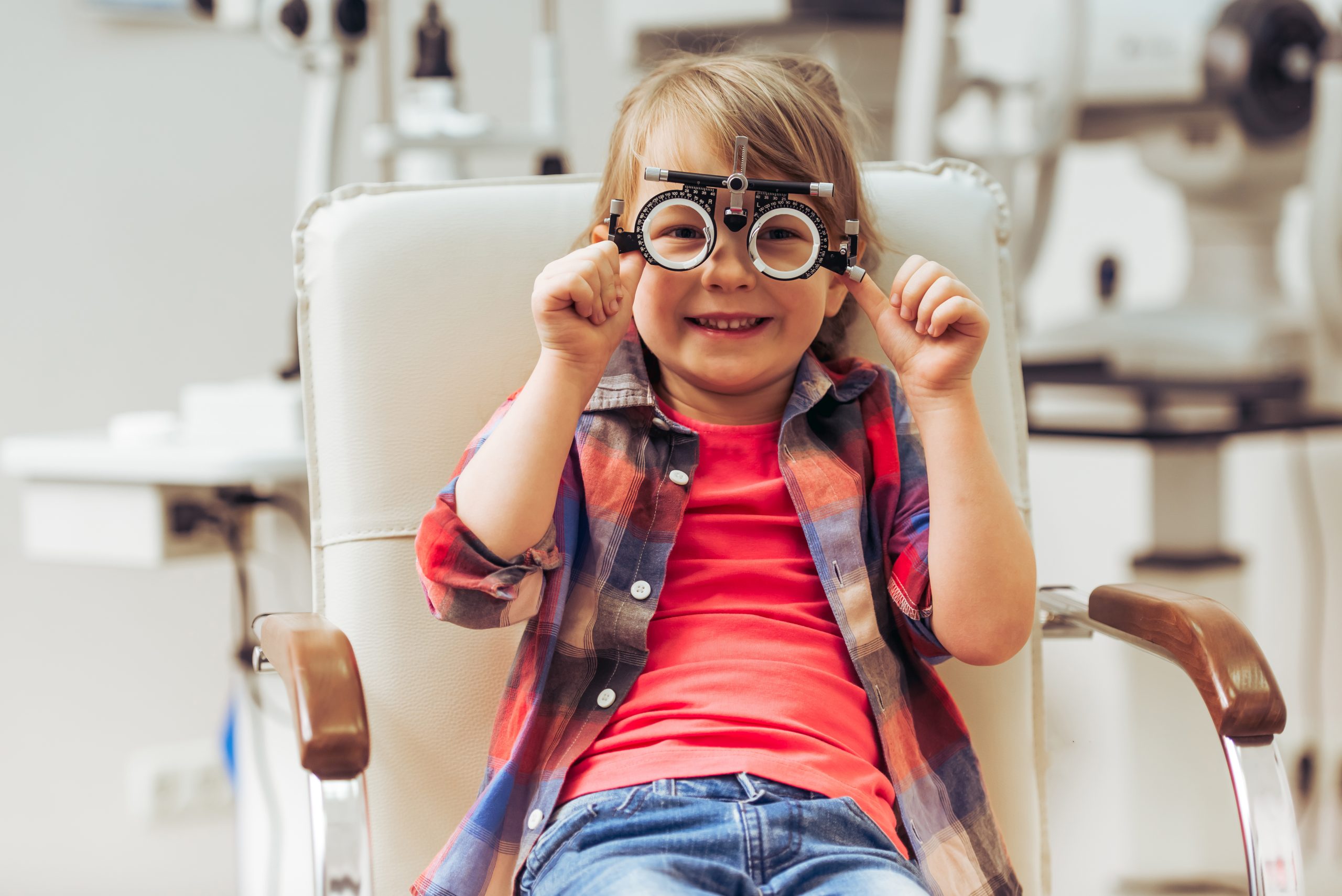Vision Therapy for Strabismus or Eye Turns
Strabismus is one of the most common eye conditions in the US, affecting 4% of the population. While there are several treatment options for Strabismus, vision therapy is one of the most effective treatments to help you regain the coordination of both eyes.

What is Strabismus?
Also known as crossed eyes, Strabismus is a condition in which both eyes don’t look at the same place simultaneously. This can present as one eye drifting inward toward the nose (esotropia), outward (exotropia), upward (hypertropia), or downward (hypotropia). It can be present all the time (constant), or it can only happen sometimes (intermittent).
Is Strabismus Treatable?
Yes, Strabismus is treatable for both children and adults. Surgical and non-surgical Strabismus treatment can improve the eye’s misalignment and improve visual acuity by helping your eyes work together. It can also help alleviate some of the problems commonly associated with Strabismus, like frequent migraines, strained eyes, or fatigue, and improve your appearance.
Visual Therapy Services that Unlock Your Vision Potential
Book Your Appointment Today
What Causes Strabismus?
Normally, all the six muscles that control eye movement work together to line up and focus both eyes in the same direction, but when you have Strabismus, these muscles don’t work together to keep normal ocular alignment (eye position). As a result, one eye looks at one object while the other turns in a different direction and looks at another. When this occurs, two different images are sent to the brain, one from each eye, confusing the brain.
Strabismus is common in babies and toddlers due to heredity or problems during physical development. Most cases in children are caused by poor communication between the brain, muscles, and nerves of the eye. However, it can also occur in adults with childhood strabismus that was not previously treated or has recurred or progressed. Strabismus can also develop in adults with conditions affecting eye muscles, such as stroke, head trauma, Graves’ disease, Myasthenia gravis, brain tumor, or diabetes.
Treatment Options for Crossed Eyes
- Vision Therapy: This non-surgical treatment for strabismus involves a series of progressive therapeutic eye exercises provided by your optometrist. These exercises aim to teach the brain and eyes to work together to correct problems with eye movement, eye focusing, and eye teaming and achieve clearer and more comfortable vision. Vision therapy can also strengthen your visual skills, improving reading abilities, clearer focus, better balance, improved coordination, and more accurate depth perception.
- Glasses: Patients with a mild case of Strabismus might see an improvement in their eyesight just by changing their prescription with glasses.
- Eye patch: This is an old-school approach to correcting alignment by placing an eye patch over the stronger eye. This forces the brain to receive input from the misaligned eye. The downside of patching is it is not well tolerated and doesn’t help improve binocular vision and fusion, which is the “glue” to keeping the eyes straight.
- Surgery: Strabismus surgery is an option when non-surgical treatments are ineffective. During surgery, the muscles controlling eye movement are adjusted to an improved angle. This can help get the eyes to look straight but does not teach the brain how to use both eyes together. This is often why we see regression back to the original turn after surgery and increase the possibility of multiple operations.
What Happens if Strabismus is Not Treated?
Crossed eyes are not just a cosmetic concern and can cause additional vision problems. Proper eye alignment is important to avoid seeing double, avoid suppression of the turned eye, for good depth perception, and to prevent the development of poor vision in the turned eye.
When the eyes are misaligned, the brain receives two different images. At first, this may create double vision and confusion, but over time the brain will learn to ignore the image from the turned eye (suppression). Untreated eye turning can lead to permanently reduced vision in one eye, a condition called amblyopia or lazy eye.

Strabismus Treatment in Parker, CO
At Good iSight, we believe you don’t have to live with the discomfort and problems caused by Strabismus. That’s why we provide comprehensive and personalized vision therapy for children and adults in Parker, CO. Contact us today to schedule an appointment!
